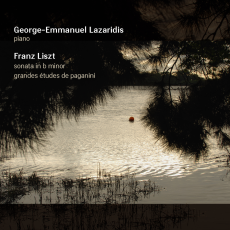Liszt - Lazaridis - Opus Magazine France
In performing Franz Liszt's Sonata in B minor, George-Emmanuel Lazaridis, the young Greek pianist, tackles one of the monuments of western piano literature. This Sonata was composed in 1857, which was a fruitful year for its author since his second Concerto for piano and his two Symphonies Faust and Dante were both first performed at that time. François-René Tranchefort judiciously points out that « the B minor Sonata remains unique in the musician's production, while it heralds the harmonic audacity of his later piano pieces ; it remains unique in romantic musical literature by reason of its originality, its inspiration, its daring construction while reaping the fruits of Beethoven's most mature works and benefitting from Schubert's Wanderer Fantaisie. The B minor Sonata is a landmark in the history of 19th Century music, just as it alone sums up Liszt' genius .» Paganini's Grandes Etudes were published in 1840 and represent a near-perfect reflection of the pianistic art and the inventive genius of the Hungarian composer. Following a noteworthy/remarkable Schumann disc which attracted much attention, George-Emmanuel Lazaridis now provides us with a hugely inspired Liszt recording. In playing the B minor Sonata, he deftly fashions a fascinating range of expression generated by a rubato which is one on its own (literally translated, it would read ‘The B minor sonata finds, under his fingers, a marvellously expressive palette engendered by a rubato which is entirely his own'). His somewhat modernistic performance is more evocative of drama than poetry (Literally translated it would be, ‘In a fairly modernist approach, his language/dissertation evokes more drama than poetry'). His interpretation is both powerful and lively and offers us (literally translated: ‘invites us to share') a new vision/perception of this work. Paganini's Grandes Etudes are also food for the imagination ; and, here, their virtuosity is in perfect accord with (the perfect match for) the enlightened rigour of the luminous playing of this young pianist. (I think the intention, and therefore the more accurate translation would perhaps be: ‘is perfectly matched by the rigour and luminous interpretation/performance by this young pianist'). The excellent sound recording in pure direct stream digital (DSD) pays full tribute to the piano's resonance and harmonics. (Translated)

